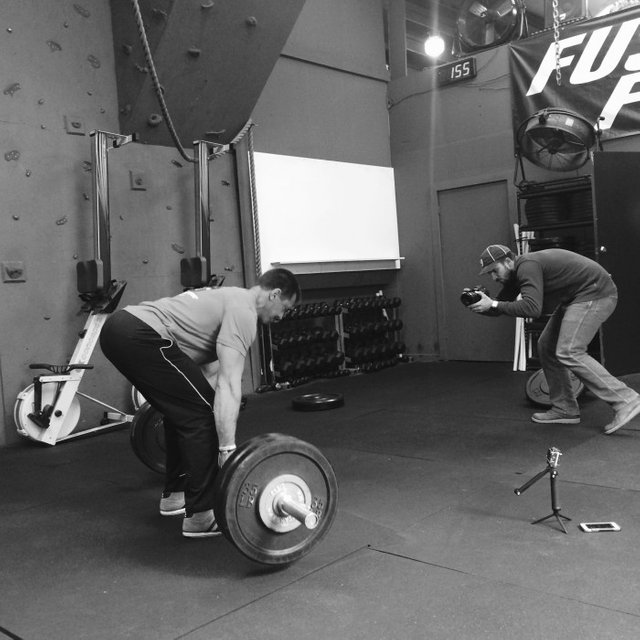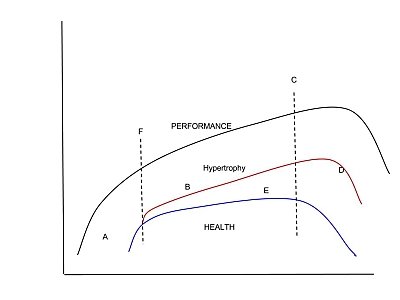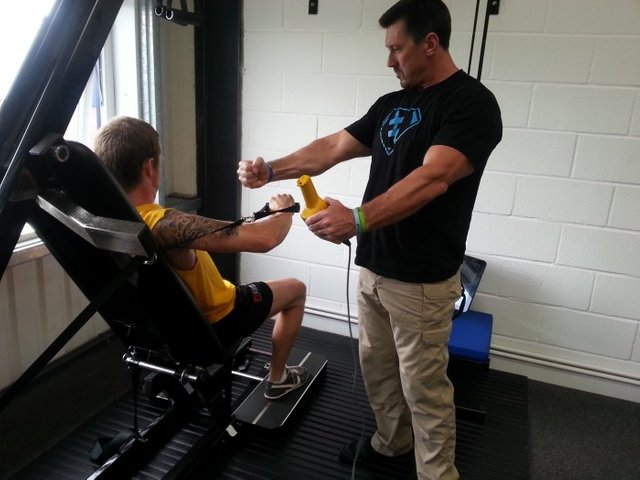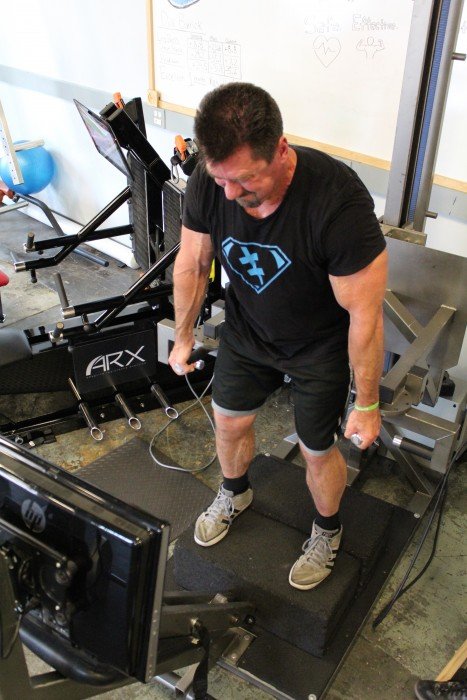The Fit and Vibrant YOU Project, #3
Staying the Course: An Introduction to the Five Ts Concept.
I’ve been a “physical culturalist” (a term I’ll flesh out below) for 40+ years now. As such, I’ve been a competitive athlete, sport-specific coach, personal trainer, gym owner… you name it, I’ve done it in this industry. And it is my firm belief that an honest and recurring self-assessment of the five simple principles I’ll describe in the coming days will propel the effectiveness of your training beyond anything you’ve previously imagined.
This series, though, will have very little to do with exercise selection, methodologies, skill sets, application or specific technique. This is decidedly not a discussion on exercise science, per se, nor is it a programming template of any sort. The underlying principles of strength and conditioning are vitally important, yet I won’t cover them in this series.
And it’s not that I don’t think those things are crucial to your training; they are, and vitally so. But before a trainee can dive into these topics, he must first take a step back and assess his current situation. In fact, so as to ensure staying clear of the weeds, even long-seasoned trainees (myself included) must periodically perform the same reassessment. Simply stated, the Five Ts reassessment ought to comprise the backbone of your entire training structure.
Ships at sea must continually reckon their current location vis-a-vis their destination. The ship’s condition and the current weather must also be assessed. The state of your physical and psychological readiness is no different. However, most trainees simply drift aimlessly in some vague hope of somehow reaching their goal. This is no way to navigate training’s high-seas; set adrift on a hope and a prayer is no way to effectively reach port! Using this analogy then, what you are going to read in this series should be considered your training sextant; a simple yet powerful tool that, in skilled hands, is an indispensable navigational aid.
Personal goals (and ship destinations) change. Once a voyage is complete, the crew then readies and sets sail for another. Physical status and current conditions change. In fact, the only thing that does remain constant is change. How you adapt to this inevitable change is critical. Smart adaptation is, in fact, the single most attribute that’s kept me in the physical culture game — in fantastic health, coupled with great body composition — for those 40+ years I mentioned above. Of this I am convinced.
“Only those who are able to adapt to changing scenarios will continue to survive and prosper. Success is directly proportional to the degree of positive adaptation to change.” ― Vishwas Chavan
I don’t know about you, but I’d much rather be adaptable than singularly brilliant. Having both qualities is, of course, most desirable. However, if I had to hedge one way or the other, I’d side with adaptability.
So what is “physical culture”?
Briefly, physical culture is the wholistic approach to maintaining a healthy, fit and vibrant physical, mental and spiritual being. It includes not only physical training, but diet, pinpointed supplementation, lifestyle factors and other elements. Even incorporating the more esoteric elements: astrology, for instance, and homeopathy. It can, but need not necessarily be, directed at a specific sporting outcome. In fact, highly competitive athletics can have an overall detrimental effect on health. For more on that idea, see this. And for the background history of the physical culture movement, see this.
If you’re like most fitness aficionados (or if you’re just diving in), training is / will be but one small (albeit vitally important) piece of an overarching, high-quality, physical culture life. But whether it’s work, family, or social and professional obligations, we are all bombarded by a plethora of non-training-related life responsibilities. How we navigate these distractions in relation to our training and lifestyle will define whether or not we are successful in the game of solidifying our health and vibrancy. Physical Culture then, includes all aspects of one’s physical being in this plane; those aspects that I separate (for ease of discussion) into four distinct pillars: exercise, diet/lifestyle, tools and supplementation. Excelling in, or mastering, each of these four pillars is, in fact, what my blog Theory to Practice is all about.
A word on goals
Think of your goals as the flip-side to the Five Ts. Actually, one’s goals and the Five Ts are in more of a yin-yang relationship, or a moon proximity / tide symbiosis. How you choose to consider this relationship, though, does not alter the fact that harsh realities exist, and tough decisions must be made.
For instance, it’s all fine and well to want to put on some serious muscle, but what if you simply don’t have access to heavy barbells and dumbbells? Or what if you want to get serious with gymnastic work, but you don’t have access to proper coaching? Sometimes your Five Ts will require you to rethink (at least, in the short term) your goals. Other times, your goals will require you take a harder look at your Five Ts assessment (are you sure you can only spare 30 minutes a day to work out? Can’t we squeeze in an additional 15 minutes?). Quite simply, it boils down to what you’re willing to sacrifice to achieve stated goals. There are few shortcuts in life. Ultimately, success is derived via smart, directed and consistent work.
This much is clear, however: goals determine strategies.
Now, the last thing I want you to do is to get hung up in a purely manufactured, chicken-and-egg conundrum. Which came first, the goal or the Five Ts assessment? In reality, it doesn’t matter where you start as long as two things are defined: (1) the destination, and (2) the best route, given the circumstance and mode of travel. That’s it. Sounds so simple, right? However, it’s precisely the “that’s it” part that ultimately hamstrings most trainees. That’s where the Five Ts come in, and that’s also why it’s imperative that you have well-defined, clear-cut goals.
Small chunks, vs the whole enchilada
Numerous dissertations could (and have) been written on the psychology of successful goal setting, but here’s the most prevalent take-away: shoot for the small and incrementally attainable vs global and overarching.
Not that the big picture shouldn’t be kept in mind (you need to know you’re headed to Paris, not NYC), but your goals should be more like what the hour-to-hour progress of that journey needs to look like in order for you to reach Paris. Break that trip down to 100 mile chunks.
So it doesn’t matter if your ultimate destination is 100 lbs of total fat loss, or adding 100 lbs to your squat PR, the idea is the same: small, incremental victories on the way to winning the war. In other words, attack each 5 lbs in the weight loss journey; attack each 5 lb increase in the squat. Because the thing is this: each of those 5 lb chunks may (and most likely will) require a re-evaluation of your Five Ts. Biting off too big a chunk will ultimately derail you and, in the process, totally discourage you from attaining your ultimate goal.
So the take-away is this: small, attainable, consistent steps. Reevaluate your Five Ts. Wash, rinse, repeat. It’s that easy.
A quick word on specific exercise programs
I’d like for you to consider exercise programs the same as sheet music, or cookbook recipes, if you will. They’re not bad, per se (ok, some are much better and time-tested than others), and they fulfill an intended purpose: to provide novice and intermediates with guidance. And that’s a good thing!
But you must understand that even the very best programs are created (by well-meaning, intelligent coaches) to bridge a specific concern at a particular point-in-time in either their, or their client’s, training life. This is true of any popular program. Bill Starr’s 5 x 5 (and many of the popular variants thereof)? One of my personal favorites. Jim Wendler’s 5,3,1? Excellent! …if you’re looking to gain grind-it-out strength. But what if you’re focus is purely hypertrophy? Or what if you’re a track and field athlete? Or if you need to work around an injury? Or if you’re in-season, and you’re looking to maintain strength? Or what if you simply want to be fit and vibrant? Any of these programs might work, depending on your current needs. Or, they might be antithetical to your needs. It depends! And that’s exactly where the Five Ts comes into play — to help you answer that “it depends” question.
And here’s a hint: it always “depends”. Context matters. Current situation matters. Ships don’t reach port without expert navigation and constant reevaluation of their current location.
So the 30-thousand foot view of the process looks a little like this:
Goals —> 5 T’s —> programs/program tweaks —-> time/work! ——> reassessment ——> Goals
So when it comes to programs, I’d like to see you eventually become a jazz musician… or a 5-star chef! Riff on the sheet music. Take a taste and evaluate. With the basic recipe solidified in your mind, deviate, and make it your own! There will be times in your training career where, after running a Five Ts assessment, you realize that (insert popular program) is just what the doctor ordered! But more times than not, though — especially for more advanced trainees — you’ll need to riff on an existing program, or create an entirely new program of your own.
Programs are a topic for another time. In the next Fit and Vibrant YOU installment, we’ll dive into the Five Ts particulars, a blueprint for achieving your physical culture goals.
Heal thyself, harden thyself, change the world -
Keith



